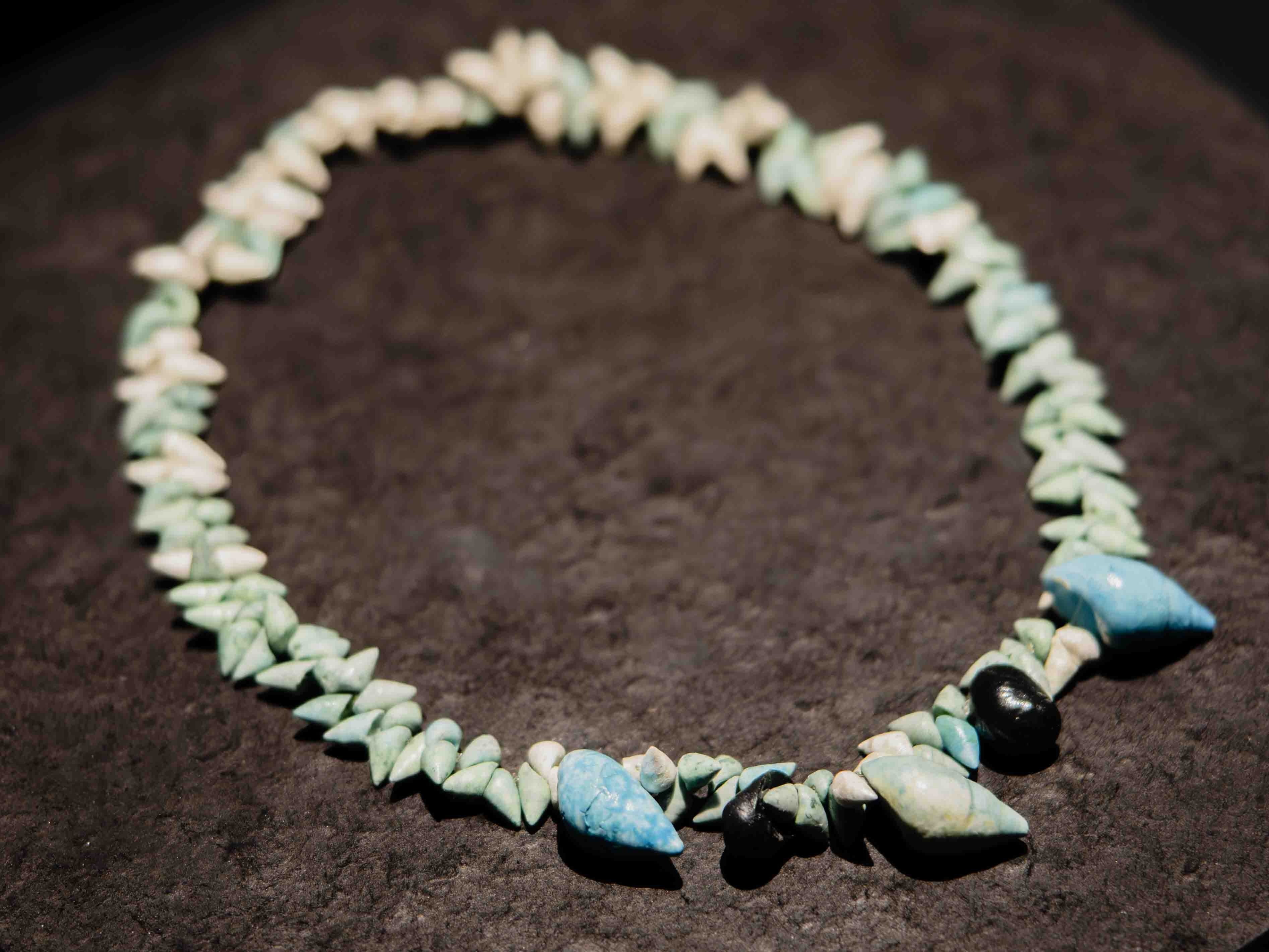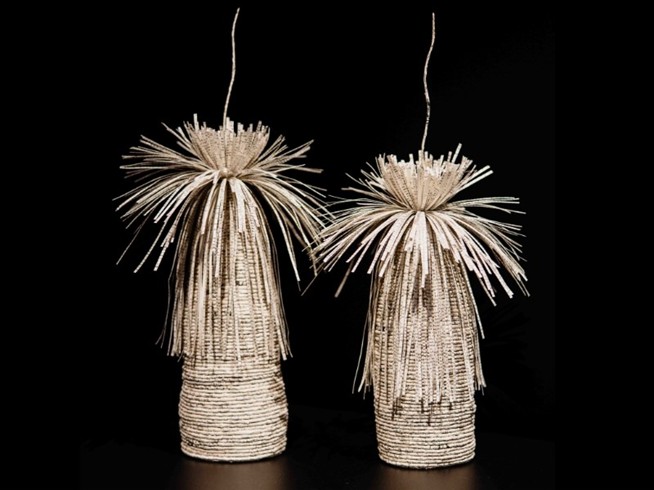
Andrew Gall is many things, but he never considered himself an artist.
The 65-year-old Pakana grandfather from Lutruwita (Tasmania) works hard to keep his culture alive, has a PhD in visual arts, is a dedicated foster carer and ran a successful IT business.
For Andrew (above, in his studio), his life work was about harnessing technology.
That was until he won the Emerging Artist Award in the prestigious 2024 Waterhouse Natural Science Art Prize with his beautiful shell necklace or Kanalaritja titled Coming Together.

The Waterhouse is owned and operated by the South Australian Museum.
“It was a life-changing experience,” Andrew said from his home and studio in Queensland’s Lockyer Valley. “Exhibitions were something I was afraid of.
“I didn’t think I was an artist, but I do now.”
Andrew started his work with shells several years ago, initially pouring them out of silver.
But he wanted to develop a technique that produced a ‘contemporary modern artefact’, so he turned to 3D printing.
For that he needed high-resolution scans and then the right printing technology, which he found in South Africa.
Kanalaritja, which translates into ‘shell stringing’, is actually a sacred practice passed down by Pakana women, often in very personal styles.
Andrew said he was determined to follow culture once he had produced the ceramic shells, and sought a woman to string them for him.
Eventually he found someone very close to home.
“I picked shells as a child but as men, we don’t string,” Andrew said.
“I was going to ask the Stringers and my Aunties, but my granddaughter said: ‘I can string the shells, Aunty Lola taught me’.”
Andrew was initially attracted to the Waterhouse by the science aspect – he’d always worked with computers and was intrigued by the interaction between technology and art.
“I saw the competition and thought why not,” he said. “I’ll have a go at that.
“I thought natural science, that’s what I do.
“It absolutely blew me away to get chosen as a finalist, but to actually win, well that was amazing.”

The ultimate winner of the Waterhouse’s Open Prize was Gulumerridjin (Larrakia), Wardaman and Karra Jarri Saltwater artist Jenna Lee with her piece Grasstree – Growing together.
The work was inspired by the resilience and renewal of Aboriginal languages, and spins the pages of a decades-old dictionary of Aboriginal words and place names into a black-and-white tribute to the native grasstree.
The biennial art competition, which has been running since 2002, is named after the South Australian Museum’s first curator Frederick George Waterhouse.
It recognises the long-running interplay between scientific research and the creative arts, from the illustrators and sculptors who help to describe and depict specimens, to contemporary artists who invite us to think about our environment and our impact on the natural world.
Entries for the 2026 Waterhouse close on 4 December and will be shortlisted by mid-February next year
The exhibition will take place at the South Australian Museum from 11 April to 19 July 2026.
More information on how to enter can be found on the Museum’s Waterhouse home page.